Since opening over 50 years ago, Walt Disney World has not only become the crown jewel of the Walt Disney Company’s theme park empire, it’s also a cornerstone of American culture at large.
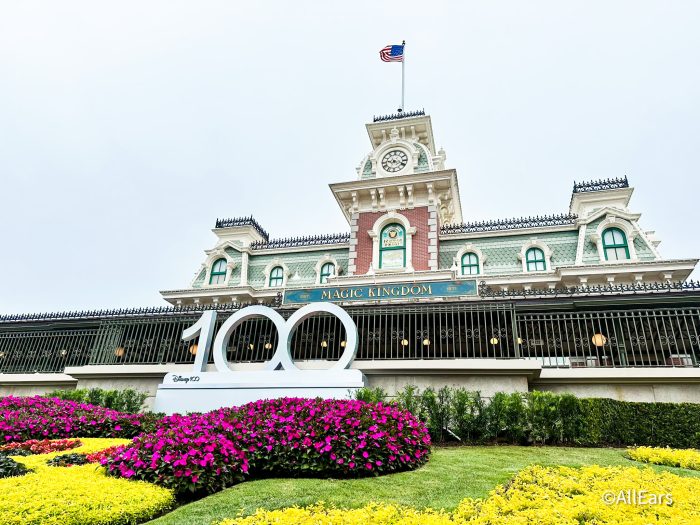
Today we’ll be looking over the complete history of Walt Disney World, from it’s earliest beginnings as Walt Disney’s final dream project to it’s current status as a vacation destination unmatched in size and scope.
Origins and Planning
The beginnings of Walt Disney World can be traced back to the earliest years of Disneyland. When that park had first opened in 1955, Walt had bought as much land as he could possibly afford at the time. However, the park’s smashing success right out of the gate led to a rush on the land surrounding the park, leading to a glut of cheap tourist attractions and motels springing up just outside the park’s berm. Walt detested this development, and vowed to himself that if and when he built another destination, he would purchase enough land to completely isolate it from the outside world.
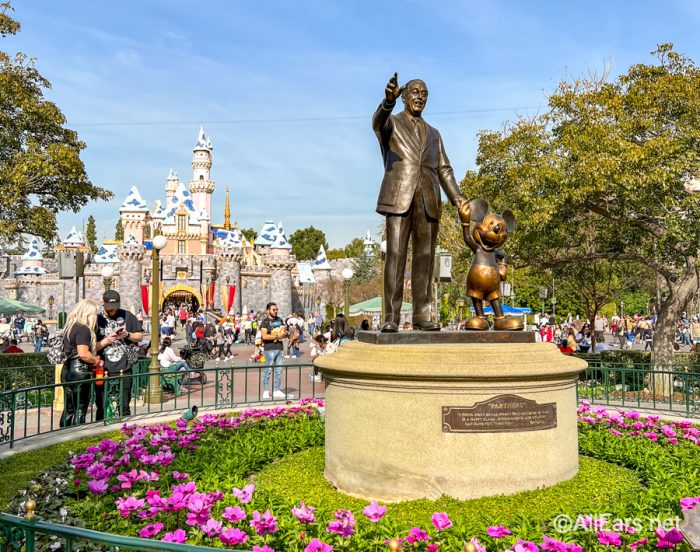
Partially due to Walt’s desire to control more and partially due to the massive success of Disneyland, the Walt Disney Company began exploring locations for a “second Disneyland” as early as 1959. Surveys done at the time revealed that only 5% of Disneyland’s visitors came from east of the Mississippi River, leading the company to consider locations in that geographic area. After a proposed project in St. Louis fell through, the company centered their planning on the East Coast.
Secret Land Acquisition
In November of 1963 — on the day President John F. Kennedy was assassinated, according to urban legend — Walt and his team flew over an area of central Florida near Orlando on a scouting trip. Seeing land central to a large connection of newly constructed roads, as well as proximity to what was then known as McCoy Air Force base — today Orlando International Airport — Walt and his executives settled on that area for what had become known as the “Florida Project.”
1964 was a milestone year in the development of Walt Disney World in two massive ways. The first saw the Walt Disney company beginning to purchase large tracts of the desired Florida land. To avoid revealing who was purchasing the land — which Disney executives thought would make nearby tracts skyrocket in value, greatly increasing the costs of their project — the company used various false front names to buy plots. The names used included “Ayefour Corporation”, “Latin-American Development and Management Corporation”, and the “Reedy Creek Ranch Corporation.” The sellers included companies large and small, universities, and many small landowners whose families had purchased parcels of land in the Sunshine State through Munger Land Company mail-order catalogs in the early 1910s.
Eventually, Disney acquired over 25,000 acres of land in Florida, providing room to isolate everything Disney from the outside world, and leading Walt to famously say, “Here in Florida, we have something special we never enjoyed at Disneyland…the blessing of size. There’s enough land here to hold all the ideas and plans we can possibly imagine.”
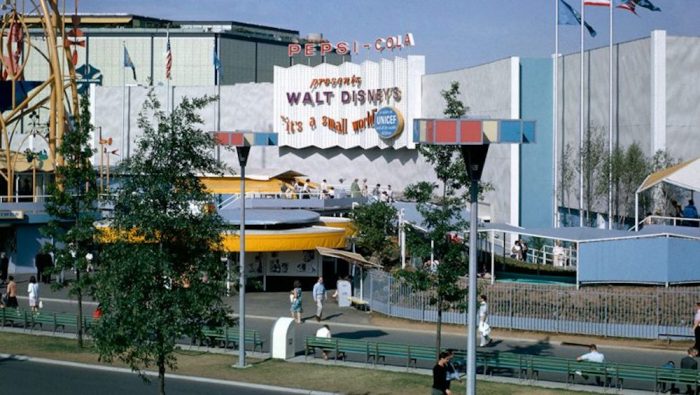
Meanwhile, 1,000 miles north of Orlando, Walt Disney Imagineering exposed East Coast audiences to Disney-style attractions through their four installations at the 1964 New York World’s Fair: “it’s a small world”, Great Moments with Mr. Lincoln, the Carousel of Progress, and the Ford Magic Skyway. Each of these attractions would eventually either directly or indirectly appear in Walt Disney World.
The Mouse is Out of the Bag
By the fall of 1965, the Walt Disney Company was widely rumored to be behind the many Central Florida land purchases, with NASA, Ford, Hallmark, the Rockefellers, and Howard Hughes being the other names bandied about. Despite several denials by multiple sources, including Walt Disney himself, the Orlando Sentinel gathered enough information to confirm that Disney was purchasing the land, publicly releasing the story in October of 1965.

Several weeks later, on November 15th, 1965, Walt and Roy Disney joined Florida governor W. Haydon Burns for a press conference officially announcing the project. During the event, Walt repeatedly emphasized that the Florida project would not simply be another Disneyland, saying that they planned to create something that would be a:
“…real credit to the state, a credit to the Disney organization and I might say that when we were planning Disneyland, we hoped that we could build something that would command the respect of the community. And, after 10 years, I feel we have accomplished that not only for the community, but the country as a whole. And that is actually what we hope to do here is to really develop something…more than an entertainment enterprise. It’s something that contributes in many other ways. Well, educationally. One thing that is to me the important thing is the family and if you can keep the family together with things. That has been the backbone of our whole business. Catering to the families. That’s what we hope to do.”
Throughout 1966, Walt’s plans came into clearer focus for the public: There would be a theme park built in Florida — an “east coast Disneyland” as it were — but it would be but a small part of the “Florida Project” and arguably the part Walt cared least about. His focus was instead on the development of his Experiment Prototype Community Of Tomorrow (or E.P.C.O.T.) a futuristic “city of tomorrow” that would display technologies, urban planning initiatives, and transportation methods that Walt hoped other American cities would adopt.
Walt’s vision was most famously spelled out in the 1966 E.P.C.O.T. film that was produced to sell the project to Florida residents and corporate investors. However, just week’s after filming was completed, Walt passed away, leaving the future of Florida’s “Disney World” uncertain.
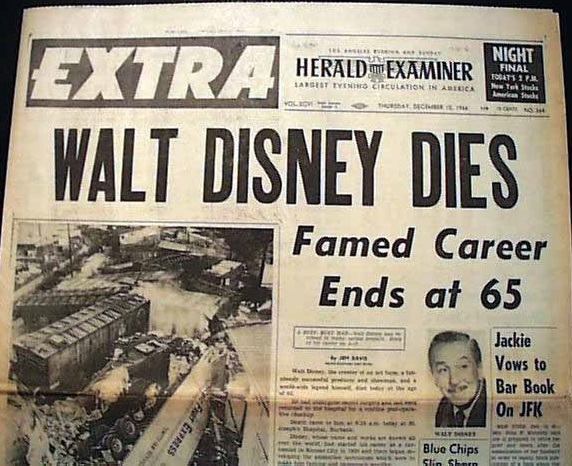
Following Walt’s death, his brother Roy postponed his own retirement to spearhead construction on Walt Disney World. The E.P.C.O.T. concept was shelved for the time being, with initial focus being shifted to strictly a vacation destination featuring a Disneyland-like theme park. However, in a move that would prove “controversial” decades later, Disney did use the city concept as part of their argument for political autonomy and control over their land, which they were eventually granted through the establishment of the Reedy Creek Improvement District.
Construction on the complex would go on through the late 1960s, and finally open in 1971. So, let’s go through the history of Walt Disney World – the name was changed by Roy to honor his brother – park by park, and section by section.
Theme Parks
Magic Kingdom (1971)
When Walt Disney World opened on October 1, 1971, the centerpiece of the so-called Vacation Kingdom was the massive Magic Kingdom. While the park did take its cues from the original Disneyland — a version of Main Street USA leading up to a central hub containing a castle, with the spokes of said hub leading to different lands, all of which were surrounded by a railroad — it was much grander. As exemplified by the massive Cinderella Castle, which stands at 189 ft tall compared to the 77 ft of Disneyland’s Sleeping Beauty Castle – the park is large and sprawling, trading Disneyland’s forced-by-space-constraints-intimacy for the grandeur of taller structures and wider walkways.
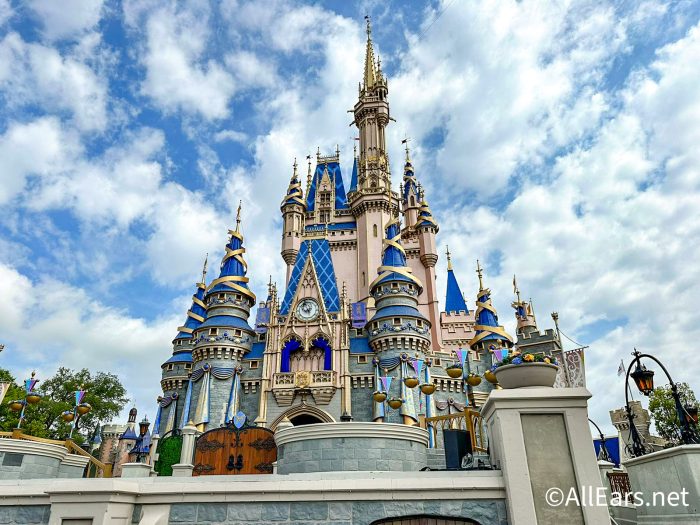
At its opening, the Magic Kingdom featured five themed lands: Adventureland, Frontierland, Fantasyland, Liberty Square, and Tomorrowland. The first four were shared with Dinseyland — though the Magic Kingdom’s were larger and featured mostly tweaked or different attractions including The Jungle Cruise, “it’s a small world”, Snow White’s Scary Adventures, Peter Pan’s Flight, Mad Tea Party, and Prince Charming’s Regal Carousel — while Liberty Square replaced the California Park’s New Orleans Square with a Colonial Era-America setting, and featured a mostly direct clone of The Haunted Mansion with a thematically appropriate new facade and the Hall of Presidents, a spiritual successor to Great Moments with Mr. Lincoln featuring animatronics of all the U.S. presidents.
Over the next five decades, the Magic Kingdom has seen countless major attractions added to its repertoire, including Pirates of the Caribbean (which was initially excluded in favor of Marc Davis’s never-built Western River Expedition), Space Mountain, Big Thunder Mountain Railroad, and Splash Mountain. The park also received a new land in 1988, when Mickey’s Birthdayland opened. That area became Mickey’s Starland in 1990 and Mickey’s Toontown Fair in 1996.
In the late 2000s, Mickey’s Toontown Fair was closed and re-absorbed into Fantasyland, opening as the “New Fantasyland” expansion in 2012. The new land, the largest overall expansion in Magic Kingdom history, features a Beauty and the Beast-themed area with the Be Our Guest restaurant at its heart, the Snow White-themed Seven Dwarf’s Mine Train coaster, and the Under the Sea ~ Journey of the Little Mermaid dark ride.

The Magic Kingdom has two major additions on tap. The first is the TRON Lightcycle/Run coaster attraction, which opened in April 2023 in Tomorrowland after multiple years of construction. Further, Tiana’s Bayou Adventure – the revamp of Splash Mountain themed to The Princess and the Frog – is scheduled to open in 2024.
EPCOT (1982)
As we detailed earlier, the E.P.C.O.T. concept was in a state of flux following the death of Walt Disney. While it was initially “pushed back” to phase 2 of Walt Disney World’s development, the company still insisted throughout the early-to-mid 1970s that some version of Walt Disney’s “city of the future” would be constructed. However, internally there was fierce debate as to how — and even if — the original concept could be executed without Walt.
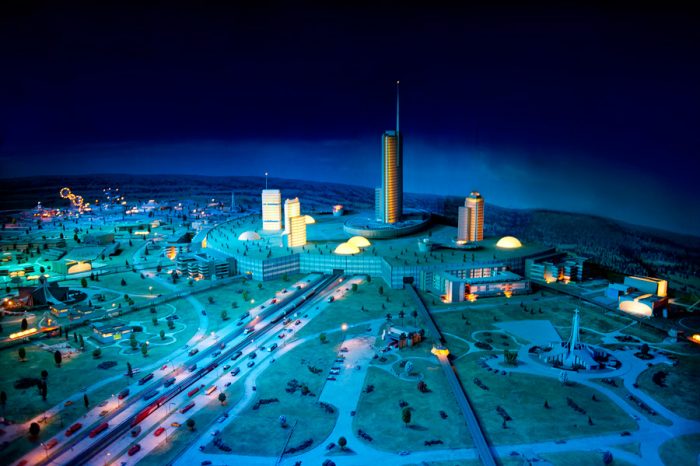
By the mid-to-late 1970s, Disney discarded the city concept, and instead decided to reformat E.P.C.O.T. into a theme park. Imagineers took elements of the Progress City idea to come up with two concepts: a futuristic industrial park based on the technological aspects of Walt’s city, or World’s Fair-style pavilions representing countries around the world, similar to a mall like area that the E.P.C.O.T. city was supposed to contain. According to Imagineering legend, one day the two models were pushed together, and the concept of the park – renamed EPCOT Center – as a “Permanent World’s Fair” featuring both concepts was born.
Construction on EPCOT Center began in 1979 and would last until literally opening day, October 1, 1982. The 141-acre park, which cost an estimated — and shocking for the time — $1.8 billion was initially split into Future World and World Showcase. The former featured attractions and pavilions, including Spaceship Earth, World of Motion, Living with the Land, and Universe of Energy, all of which strived to display the promise of humanity.

The latter featured international pavilions based on Mexico, China, Germany, Italy, the United States, Japan, France, United Kingdom, and Canada. Each was intricately themed with architecture, shops, restaurants, films, and attractions that displayed each country’s cultural heritage. On top of that, they were staffed partially by students from each of the represented nations.
EPCOT Center was a hit once it opened, serving as proof of concept that Disney could produce a successful theme park that didn’t fit the Disneyland “castle park” model. As the 1980s wore on, the park would see several major and iconic attractions added, including Journey into Imagination, Horizons, The Living Seas and Wonders of Life pavilions in Future World, and the additions of Norway and Morocco in the World Showcase. However, the good times wouldn’t last for EPCOT Center.
As the 1990s went on, EPCOT Center found itself at a crossroads. Many of the companies who’d signed 10-year agreements to sponsor attractions and pavilions at the park came to the end of their deals. Some ended their sponsorships altogether, while others like Kodak and General Motors only re-upped with agreements that their attractions be updated. Some results (General Motors’ World of Motion became Test Track) were better received than others (Kodak’s Journey into Imagination became Journey into Your Imagination — a change lamented by Disney fans to this day). Perhaps the best representation of this identity crisis can be seen in the change of the park’s name from EPCOT Center to Epcot ’94 in December of 1993, then Epcot ’95 the following year, then finally, simply Epcot.

Through the late 1990s, 2000s, and 2010s, the park’s identity crisis continued. Horizons was closed, devastating many fans, and replaced by the tepidly received Mission Space, Soarin’ was cloned from California Adventure, the Universe of Energy became Ellen’s Energy Adventure, The Living Seas being rethemed to Finding Nemo, and Norway’s Maelstrom attraction was replaced by the Frozen Ever After attraction, which represented the largest yet addition of Disney intellectual property into the park.
In 2017, Disney announced details of a massive transformation for the park, one they said would make the park “more Disney, timeless, relevant, family-friendly”, while at the same time keeping “the original vision alive.” Major additions and changes included the additions of Guardians of the Galaxy Cosmic Rewind (which replaced Ellen’s Energy Adventure and marked the inclusion of Marvel intellectual property into the park), and Remy’s Ratatouille Adventure in the France Pavilion. In addition, the central plaza of the park is undergoing a massive refurbishment, headlined by the upcoming addition of the Journey of Water, Inspired by Moana walkthrough attraction.
All these changes have led to even more name changes, as Future World is now broken down into “neighborhoods” named World Celebration, World Discovery, and World Nature, complementing World Showcase, which isn’t changing. Overall, the name of the park was slightly tweaked as well, as it’s now officially EPCOT (with all caps typography again).

Disney’s Hollywood Studios (1989)
As we explained several years ago, Disney’s Hollywood Studios theme park — which opened as Disney/MGM Studios in 1989 — has one of the more well-known “creation myths” in theme park history.
“As the story goes, in the early 1980s future-Disney CEO Michael Eisner, in the guise of the head of Paramount, sat in on a pitch from Universal and learned that they were planning to build a version of their studio tour – which had been successfully running at their Hollywood studio since the 1960s – in Orlando. Allegedly, Eisner kept the details of the pitch in mind when he took over leadership of the Walt Disney Company in 1984, and when he saw that Imagineers were already working on a potential entertainment pavilion for EPCOT, he instead told them to turn said pavilion into a full-scale studio tour and theme park to beat Universal to the punch. Further, the company would enter into a licensing agreement with MGM to use the studio’s library of films in the park, leading to its initial name: the Disney/MGM Studios.”
Whether that’s exactly how it happened or not, the version of the Studios park that opened on May 1, 1989, was built centrally around the concept of a studio. The main attraction was the studio tour, which would take guests around the real sets of the functioning studio Disney operated at the park. In fact, the only other major attraction at opening was the animatronic extravaganza The Great Movie Ride, which featured a journey through cinema history. The park itself was a quick success, but was blasted by some as a “half-day” park.
Disney began shifting the Studios to more of a traditional theme park almost immediately, adding Star Tours, Indiana Jones Epic Stunt Spectacular, and Muppet*Vision 3D within the park’s first two years of operation, while cutting the length of the Studio Tour attraction and opening up some of the areas its trams used to drive through for pedestrian use.
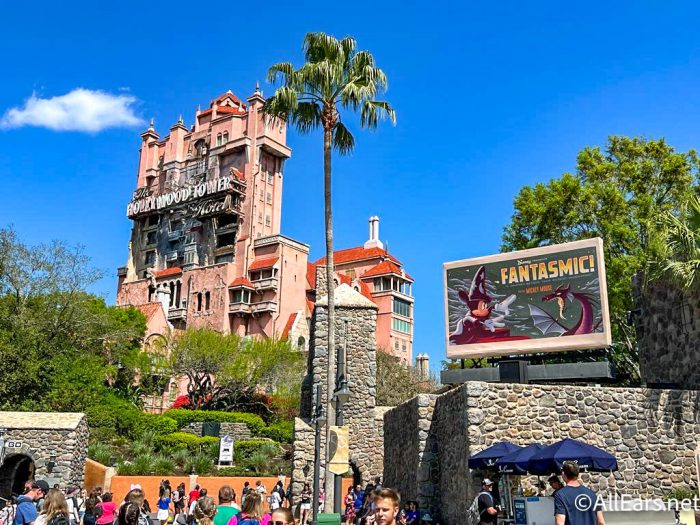
MGM Studios made it’s final turn into a full theme park in 1994 with the opening of the Sunset Boulevard expansion, capped by the revolutionary Twilight Zone Tower of Terror E-Ticket attraction. Over the next decade plus, the park saw the addition of the Rock ’n’ Roller Coaster and Lights, Motors, Action!: Extreme Stunt Show.
The park saw two major changes in 2008: First, at the start of the year, its name was officially changed from Disney/MGM Studios to Disney’s Hollywood Studios. Secondly, that year saw the opening of the Toy Story Mania attraction, the first major Pixar-based attraction in the park’s history. However, these had nothing on what was to come.
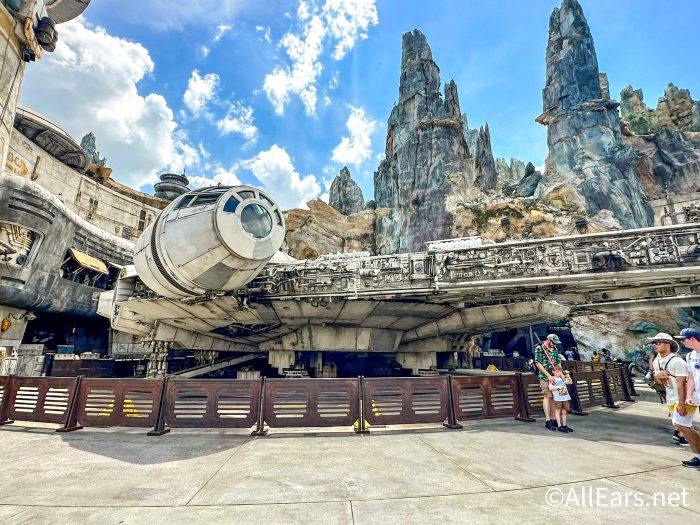
By the late 2010s, Disney phased out the functioning studios theme entirely. The final remaining day one attraction — The Great Movie Ride — was closed and replaced by Mickey & Minnie’s Runaway Railway. Furthermore, 2019 saw the addition of two major lands: Star Wars Galaxy’s Edge and Toy Story Land, both of which fully immersed guests in the worlds of their respective IPs, and ditching the original park pretense of being “on set.”
Animal Kingdom (1998)
Walt Disney World’s most recent theme park opened on April 22, 1998 — Earth Day, appropriately enough — to great fanfare. Planning and design for the park had begun just after the Disney/MGM Studios park had opened nearly a decade earlier. Imagineer Joe Rohde spearheaded the development of the park — he once famously brought a full-size Bengal tiger into a meeting with Michael Eisner while pitching the park — and became a well-known spokesperson for Animal Kingdom on various documentaries and television programs during its early years.
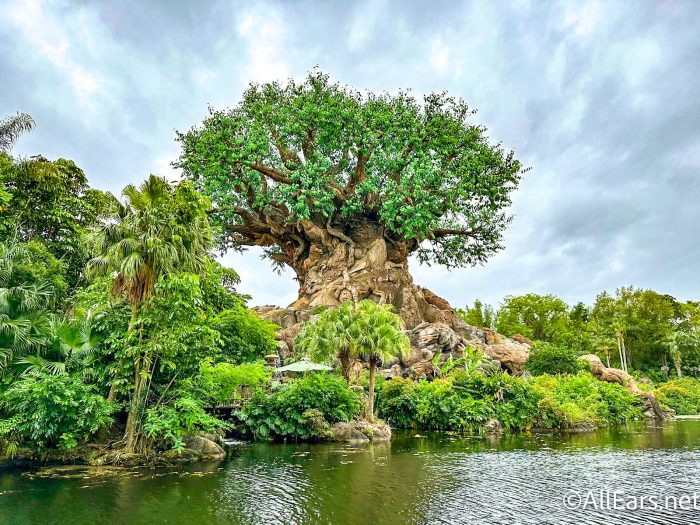
The park, as it originally opened, featured the massive Tree of Life icon at its center. From there, guests could explore themed lands that celebrated animals that were “real, ancient, and imagined” according to its dedication plaque.
Real Animals could be found in lands that recreated the the continents of Africa and Asia — each of which featured attractions and exhibits with animals from their native lands, including the park’s headline Kilimanjaro Safaris attraction — as well as Rafiki’s Planet Watch.
Ancient and extinct animals called Dinoland U.S.A. home, headlined by the Dinosaur attraction, a near direct clone of the Indiana Jones Adventure ride from Disneyland.
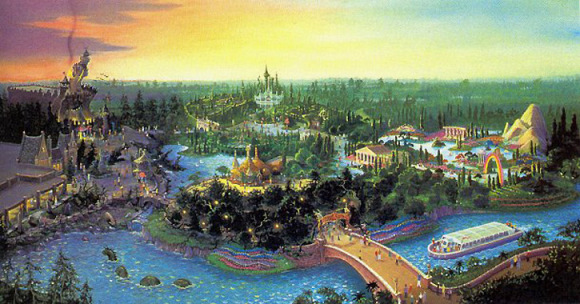
Imagined animals were supposed to be found in a massive, now legendary unbuilt land known as Beastly Kingdom. As we’ve covered:
“The land was planned to be split into two halves based around “good” and “evil.” The “good half of the land would have been built around a walkthrough attraction known as The Quest of the Unicorn. The large maze would have featured numerous “magical” encounters, and culminated with an encounter between guests and a “life size” realistic unicorn animatronic. This side of the land would have also featured a boat ride attraction titled Fantasia Gardens themed around its namesake film. The “evil” side of Beastly Kingdom was to have been the burnt out remains of a medieval village, the skyline of which was to be dominated by a larger than life castle. Said castle would have held the land’s, and arguably the park’s, premiere attraction: Dragon’s Tower. The thrill attraction would have used an inverted roller coaster ride system to tell the tale of a group of bats stealing treasure from the evil dragon who lords over the castle and village.”
The real estate set aside for beastly Kingdom was “temporarily” used for Camp Minnie Mickey, which was mainly used as a meet-and-greet location, with the plan being for it to close in time for Beastly Kingdom to be constructed for the park’s second phase of construction. However, Beastly Kingdom was never built.
Allegedly, after it was cut from phase one of the Animal Kingdom project, most of the unbuilt land’s designers went to work at Universal Studios during the development of Islands of Adventure, with many of Beastly Kingdom’s ideas being integrated into that park’s Lost Continent land. This supposedly led to Beastly Kingdom being canceled for good, and the “temporary” Camp Minnie Mickey stood for nearly two decades.

In the 20 years after the park opened, Animal Kingdom saw some additions — most notably the Expedition Everest E-Ticket roller coaster in 2006 and most controversially the “off-the shelf” carnival-themed Chester and Hester’s Dino-Rama mini-land in 2000 — but for the most part remained pretty similar to its opening day experience. That changed in the late 2010s.
2017 saw not only the largest expansion in Animal Kingdom’s history, but one of the largest in Walt Disney World history, period. That year, Pandora – World of Avatar opened. The land, based on James Cameron’s record-breaking film, provided a heavily themed and immersive experience featuring two attractions: the Navi River Journey and the revolutionary Flight of Passage.
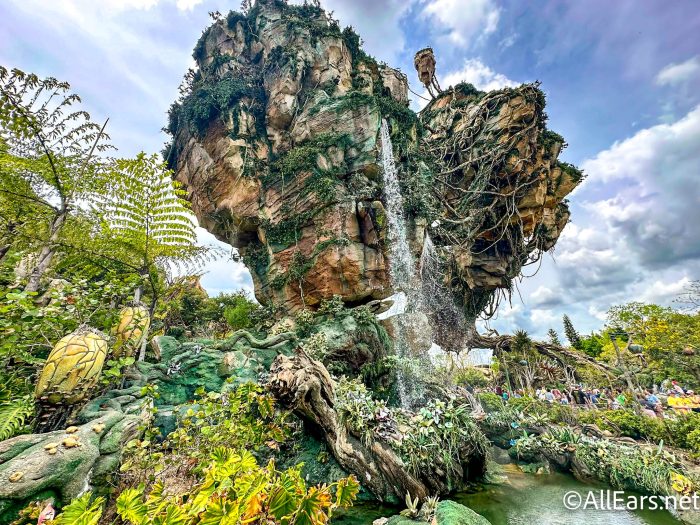
Pandora transformed the Animal Kingdom experience, giving the park a much needed jolt. The land remains a draw — arguably now more than ever thanks to the success of Cameron’s Avatar sequel — and Flight of Passage remains one of the resort’s most in-demand attractions.
Beyond the Theme Parks
Of course, Walt Disney World features more than its four theme parks. For starters, there are the property’s water parks. Over the years, there have been multiple attractions and leisure activities spread across the Walt Disney World property.
The Evolution of Disney Springs
The area currently known as Disney Springs has been part of Walt Disney World since the very beginning. Originally, the company planned to build an on-property housing development on Walt Disney World’s southern edge, near the site of the Walt Disney World Preview Center. While this housing development never came to be, it did lead to the opening of the Lake Buena Vista Shopping Village in 1975.

The Village did quickly became a destination for Walt Disney World guests, who shopped for everything from toiletries to souvenirs at its themed shops. In addition, they could have some of the finer dining available on property at the time on the Empress Lilly, a massive structure disguised as a steamboat.
The Buena Vista Shopping Village remained relative unchanged — outside of name changes to the Walt Disney World Village in 1977 and Disney Village Marketplace in 1980 — for more than a decade, until Michael Eisner and Frank Wells took over leadership of the Walt Disney Company in the mid-1980s. The duo had two goals in mind for Disney World: try to appeal to an older, hipper demographic, and keep people on property. Thanks to both of these goals, the duo decided to target the Church Street Station night club complex, a themed Orlando venue that was drawing many of Disney’s younger adult guests off-property at night.
Disney’s answer to Church Street Station — Pleasure Island — opened on May 1st, 1989. The nightclub district built next to the existing marketplace featured numerous nightclub venues aimed at adult guests. These included Mannequins, 8TRAX, the Comedy Warehouse, and (most famously) the heavily themed and beloved Adventurers Club.
1997 saw the Marketplace and Pleasure Island combined with a new district — the West Side, which featured numerous restaurants, shops, and the DisneyQuest indoor theme park, as well as the pre-existing Planet Hollywood restaurant and movie theater — under the new moniker of Downtown Disney.
This version of Downtown Disney existed for over a decade, until Pleasure Island was closed in 2008. As we’ve detailed in the past, Disney re-themed the whole area in the mid 2010s:
“On March of 2013, Disney announced that the entire Downtown Disney District would be rethemed as Disney Springs. The entire area was given an in-depth backstory based around the titular springs, with inspiration taken from several real coastal towns in Florida. What had been Pleasure Island was rebuilt as The Landing, the town’s nautical hub, featuring numerous restaurants and shops including The Boathouse and the Indiana Jones-themed Jock Lindsey’s Hangar Bar. The Marketplace was rethemed to appear as if “it was developed in the 1930s and displays the American Craftsman style of architecture.” Meanwhile, the West Side was also given an elaborate backstory in the new theme, having now supposedly been built “as a town expo in the 1950s. A pedestrian bridge connects the outlying area to the rest of the town. A circus tent (which serves as the theater for Cirque du Soleil’s resident production, La Nouba) and hot air balloon remain. The expo buildings now house Splitsville bowling lanes, an AMC movie theater, and a House of Blues, among other venues” according to Dave Hoffman, a creative director at Walt Disney Imagineering.”
The Disney Springs district remains popular among many guests, and has become a Walt Disney World staple.
Water Parks
Over the course of Walt Disney World’s five decades, there have been three water parks on property, two of which are still operating.
River Country
Walt Disney World’s first water park, River Country, opened on the shores of Bay Lake on June 20, 1976. The park, themed after an “old swimming hole” featured numerous slides and pools, all of which used water filtered in from the lake.

The park was a hit amongst Disney guests for 25 years, and if our comments section is any indication, formed a core memory for many Walt Disney World guests during this period. However, the park never reopened after it closed for the winter following the 2001 summer season. While rumors have long run rampant about why River Country closed — with everything from brain eating amoebas to unreported guest drownings being shared as “truth” — reality is that the post-9/11 downturn in tourism combined with River Country’s aged attractions led to its closing. After several years, Disney officially confirmed in 2004 that the park would never reopen. It remained in a derelict state for over a decade, before being torn down in the late 2010s.
Typhoon Lagoon (1989) & Blizzard Beach (1995)
Despite the closure of River Country, Walt Disney World still has two full-scale water parks: Typhoon Lagoon (opened June 1, 1989) and Blizzard Beach (opened April 1, 1995). Both are heavily themed, with the former being designed as a “tropical paradise that had been laid waste by a massive typhoon complete with a shrimp boat marooned on top of a mountain” and the latter being a ski resort that was built after a freak snowstorm and is now “slowly melting in the Florida sun.”
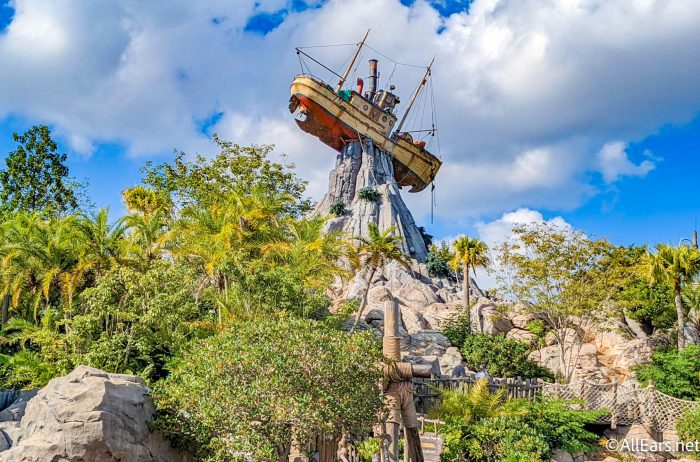
Fairytale Wedding Pavilion (1995)
As weddings at Walt Disney World became more popular in the 1990s, 1995 saw the opening of the Fairytale Wedding Pavilion. Located at the Grand Floridan Resort and Spa, the pavilion provides all of the accouterments one would expect from a modern, upscale wedding venue, complete with magical Disney touches including a glorious view of Cinderella Castle.
Walt Disney World Speedway (1995)
The Walt Disney World Speedway opened on November 29, 1995. While the track, located near the Magic Kingdom, was used for professional Indy Racing League races from 1996 to 2000, and NASCAR Craftsman Truck Series races in 1997 and 1998, its main function was as avenue for experiences that allowed guests to drive or ride in real race cars. The track closed for good in August of 2015, following a fatal accident earlier that year.
Wide World of Sports Complex (1997)
Opening on March 28, 1997, the Wide World of Sports Complex — currently known as the ESPN Wide World of Sports Complex — is mainly used for AAU tournaments featuring young athletes from around the United States. However, it has been home to some professional sporting events, including the 2020 NBA Playoff Bubble, the MLS is Back Tournament, the 2016 Invictus Games, and the 1997 U.S. Men’s Clay Court Championships. It served as the Spring Training home of the Atlanta Braves from 1997 to 2019. It’s also hosted two regular season Tampa Bay Rays games in 2007 and 2008, as well as serving as the Rays’ temporary Spring Training home in 2023.
Golf
Since its opening, Walt Disney World has featured two full golf courses: the Palm and Magnolia. The complex also features two miniature golf courses: Fantasia Gardens Mini Golf (opened in 1996), and Winter Summerland Mini Golf (opened in 1999).
Resort Hotels:
Walt Disney World’s resort hotels have been part of the WDW experience since the property opened in 1971. The Polynesian Village and Contemporary resorts, as well as the Fort Wilderness Campground, were all open on October 1, 1971. The next resort, then known as the Golf Resort, opened in December of 1973. It was renamed the Disney Inn in 1986, before being purchased by the US Department of Defense in the mid-1990s, and renamed Shades of Green. It currently serves as part of the part of the military’s Morale, Welfare, and Recreation program.
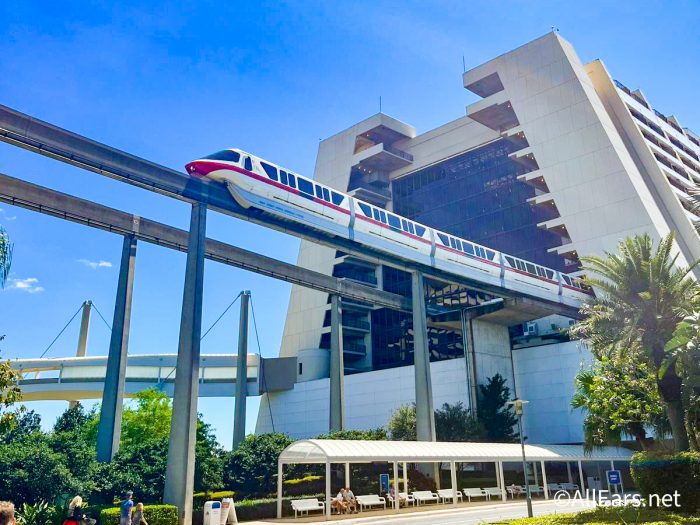
Despite numerous plans for expansion, these four resorts remained the only resorts on Walt Disney World property until the late 1980s, when Michael Eisner and Frank Wells began opening more hotels as part of the same expansion that led to the aforementioned openings of the Disney/MGM Studios, Typhoon Lagoon, and Pleasure Island.
The late 1980s and 1990s saw the openings of the Grand Floridian Resort and Spa in 1988, the Caribbean Beach Resort (which was the first of the Moderate Resort category in 1988), the Swan and Dolphin in 1990, the sister Yacht Club and Beach Club resorts in 1990, Port Orleans in 1991 and Dixie Landings in 1992 (which were combined into one Port Orleans Resort in 2001 with the original Port Orleans section becoming the French Quarter and Dixie Landings becoming Port Orleans Riverside), Disney Vacation Club Resort in 1991 (renamed Old Key West in 1996 when the DVC expanded to other resorts), the first value resorts: All-Star Sports (1994), All-Star Music (1994), and All-Star Movies (1999), the Wilderness Lodge (1994), the BoardWalk Inn & Villas (1996), and finally Coronado Springs (1997).

The 2000s saw a slowdown in resort expansion, but Disney has continued opening resort hotels in the new millennium. These include the Animal Kingdom Lodge in 2001, Pop Century in 2003 (after being delayed — and essentially cut in half — following the 2001 tourism downturn), 2004 saw the opening of Saratoga Springs, which had previously been known as the Disney Institute property.
Besides the opening of the Art of Animation Resort in 2012 — which was actually a reuse of the unfinished portions of hotel that were supposed to form the second half of the Pop Century Resort — Disney’s main focus in the 2010s has been vacation club properties. These include the Contemporary’s Bay Lake Tower (2009), the Villas at the Grand Floridian Resort (2013), the
Polynesian Bungalows (2015) at the Polynesian, the Copper Creek Villas (2017), the Gran Destino Tower (2019), and the Riviera Resort (2019).
In 2022, Disney opened the Galactic Starcruiser resort, a massively immersive Star Wars vacation experience that combines elements of typical cruise itineraries as well as LARPing to create an experience different than anything else Disney has ever done before.

Transportation
Walt Disney World has had a dedicated transportation fleet since the resort first opened. The early years of the resort featured the Monorail line as well as watercraft connecting the Vacation Kingdom. As Disney World expanded, a fleet of buses was added to the transportation options. Finally, 2019 saw the opening of the Disney Skyline gondola system.
That’s a look at the history of Walt Disney World — telling all of the stories and giving all of the details would fill several volumes, but our goal here was to give you a good overview. If you want to know some Disney World secrets — click here! Stay tuned to All Ears for more Disney World info!
Join the AllEars.net Newsletter to stay on top of ALL the breaking Disney News! You'll also get access to AllEars tips, reviews, trivia, and MORE! Click here to Subscribe!

Are there any major elements of Walt Disney World’s history you wish we’d have included? Let us know in the comments below.


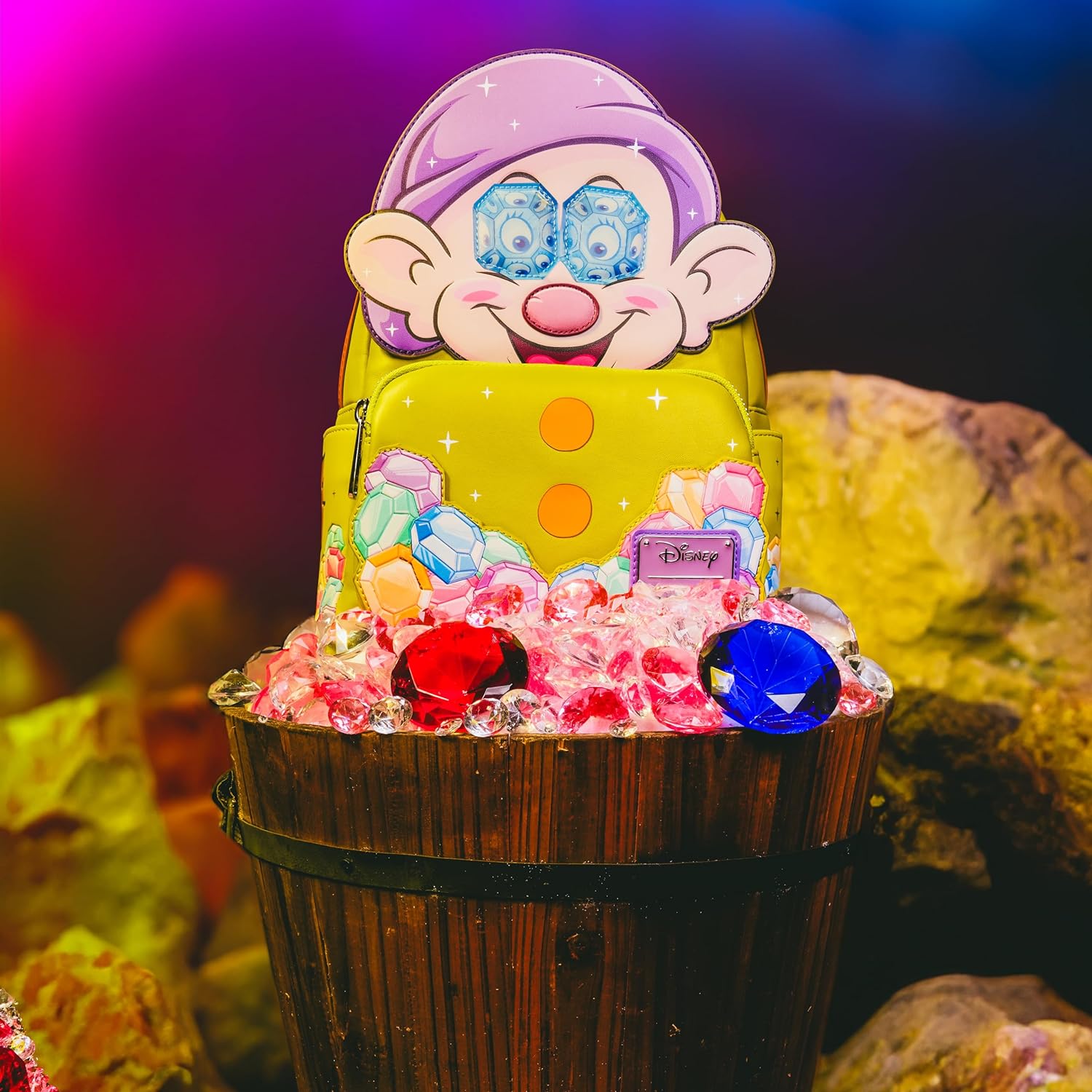
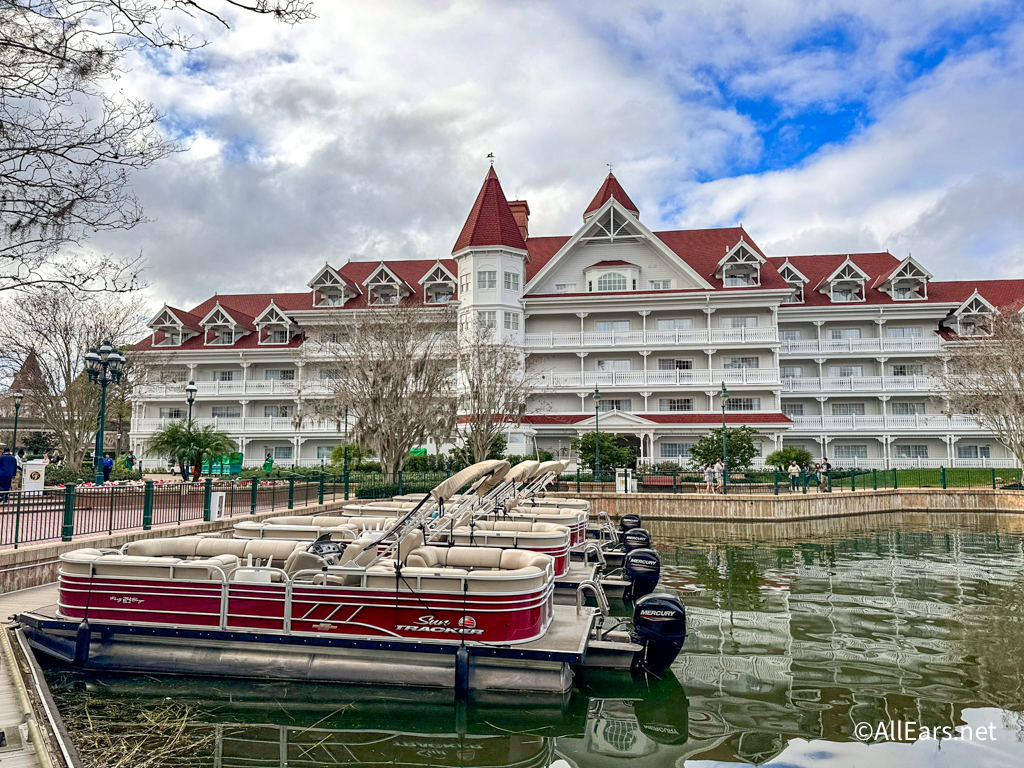


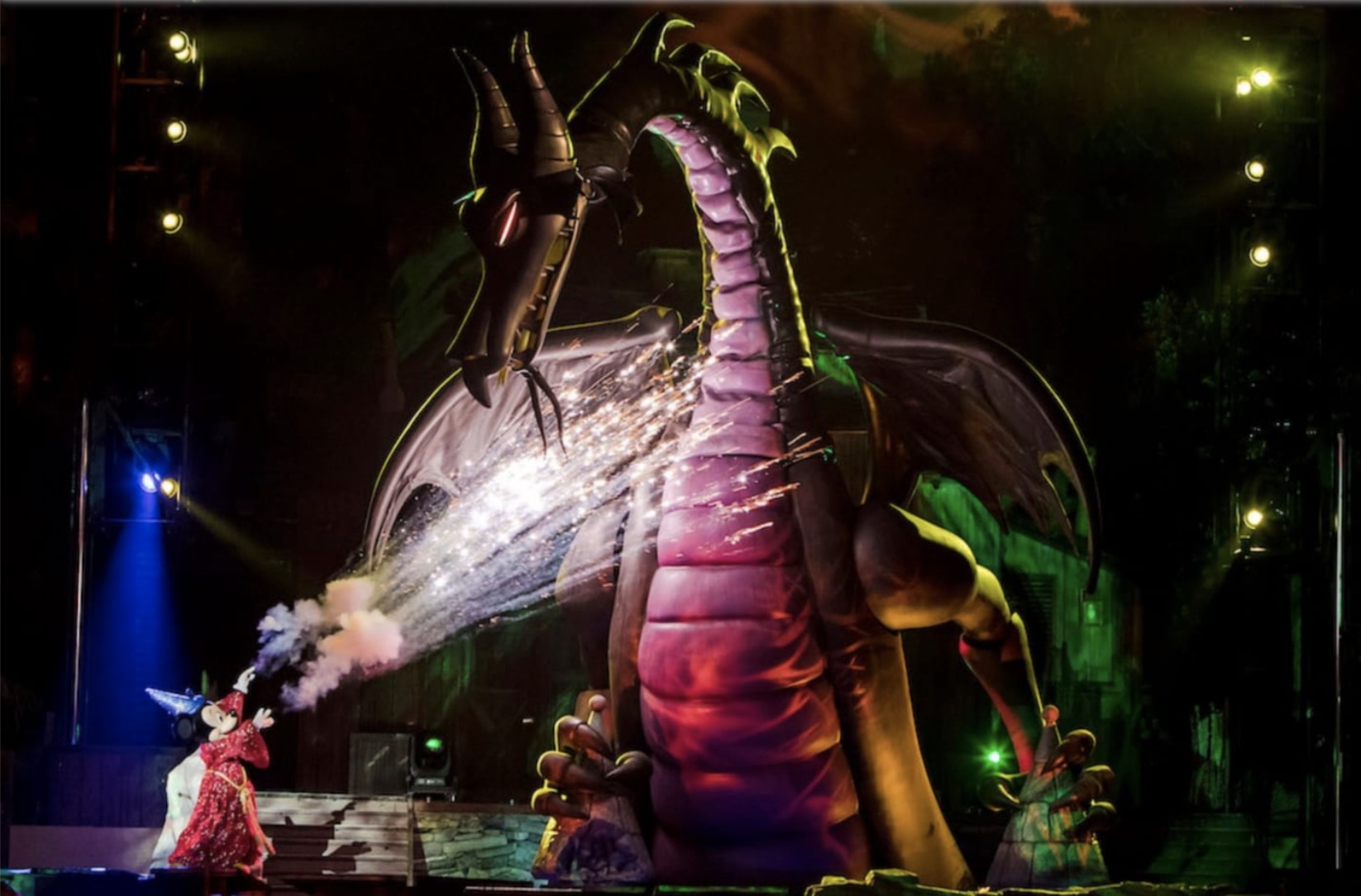
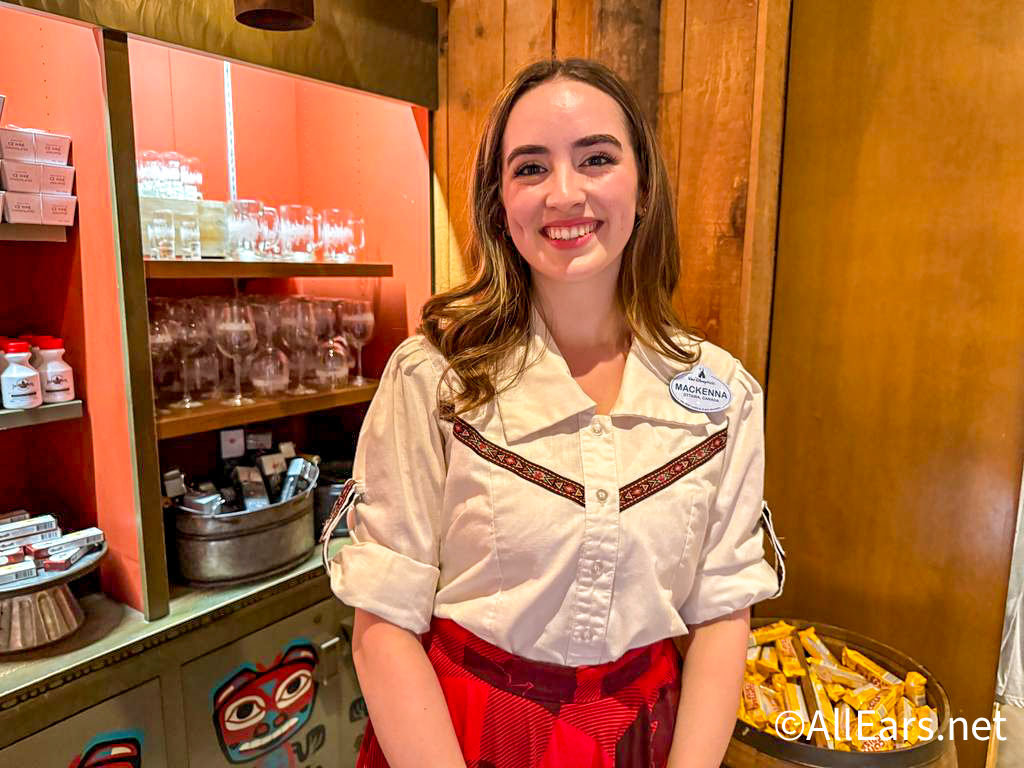
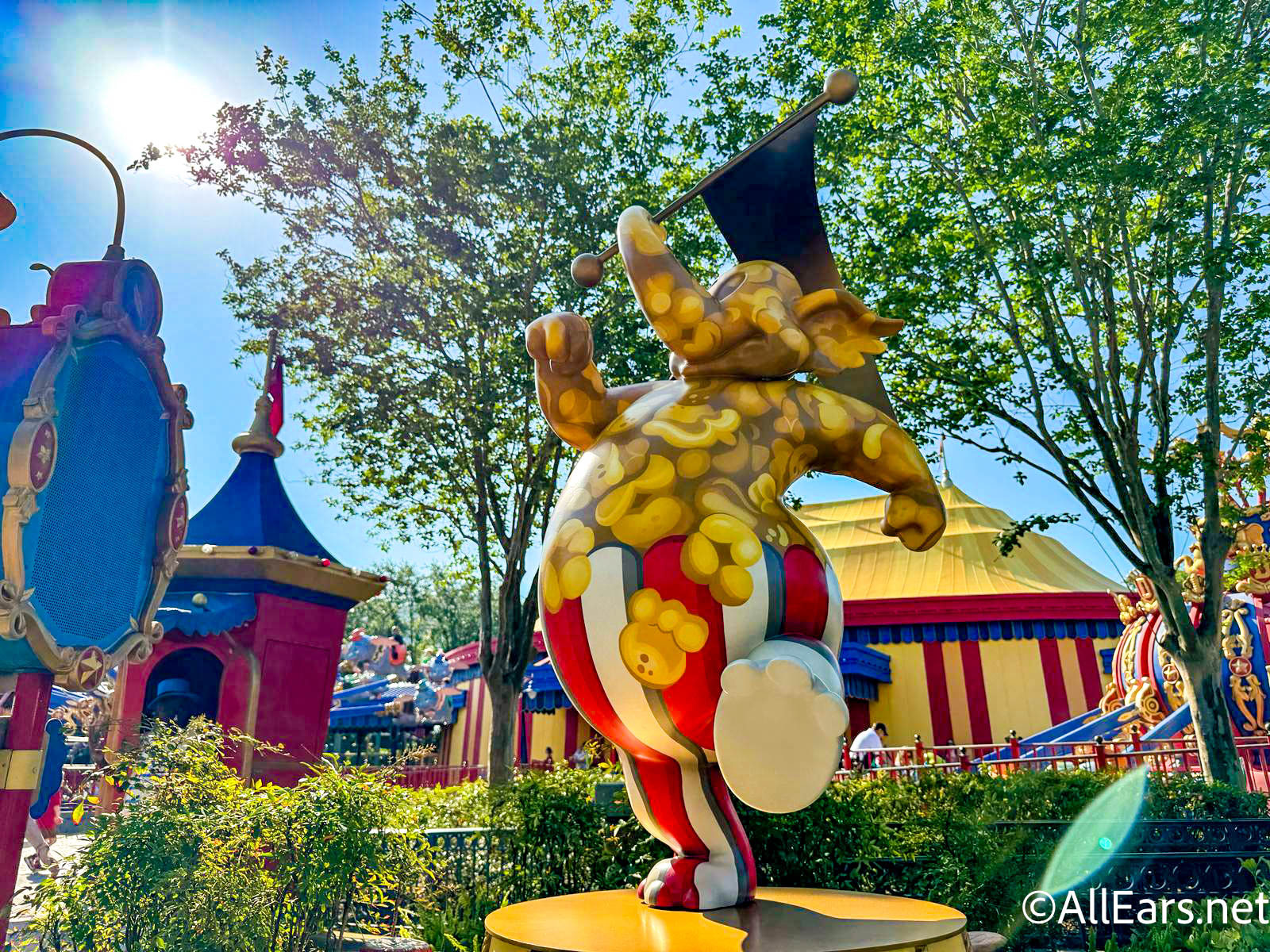
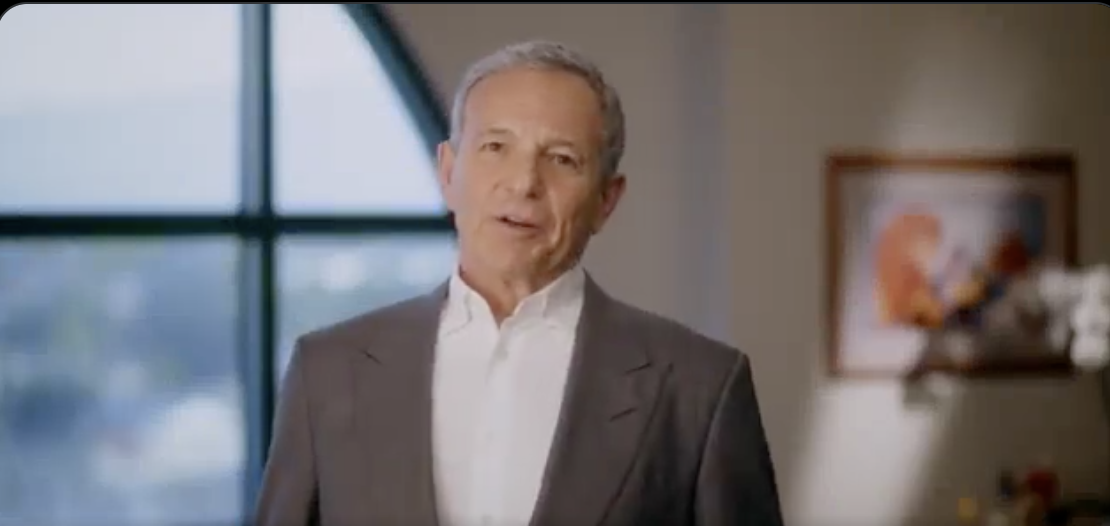

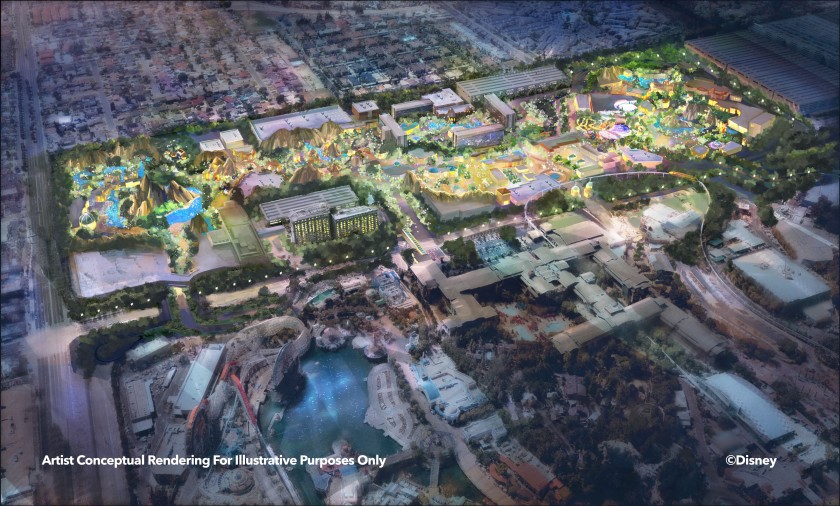

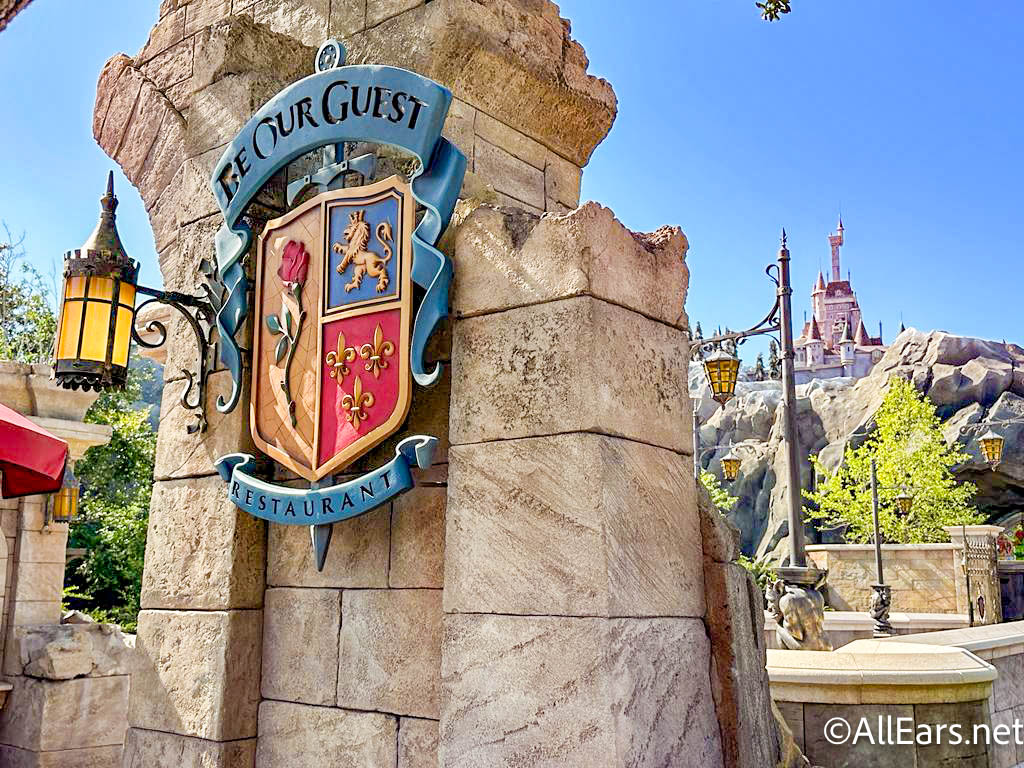
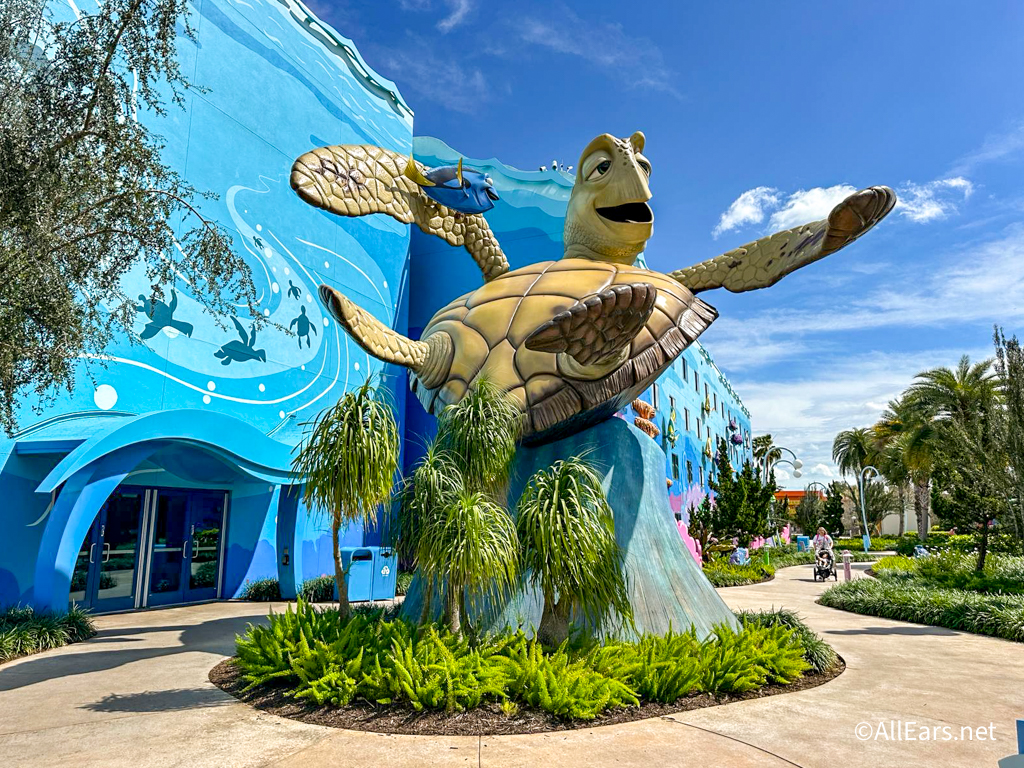
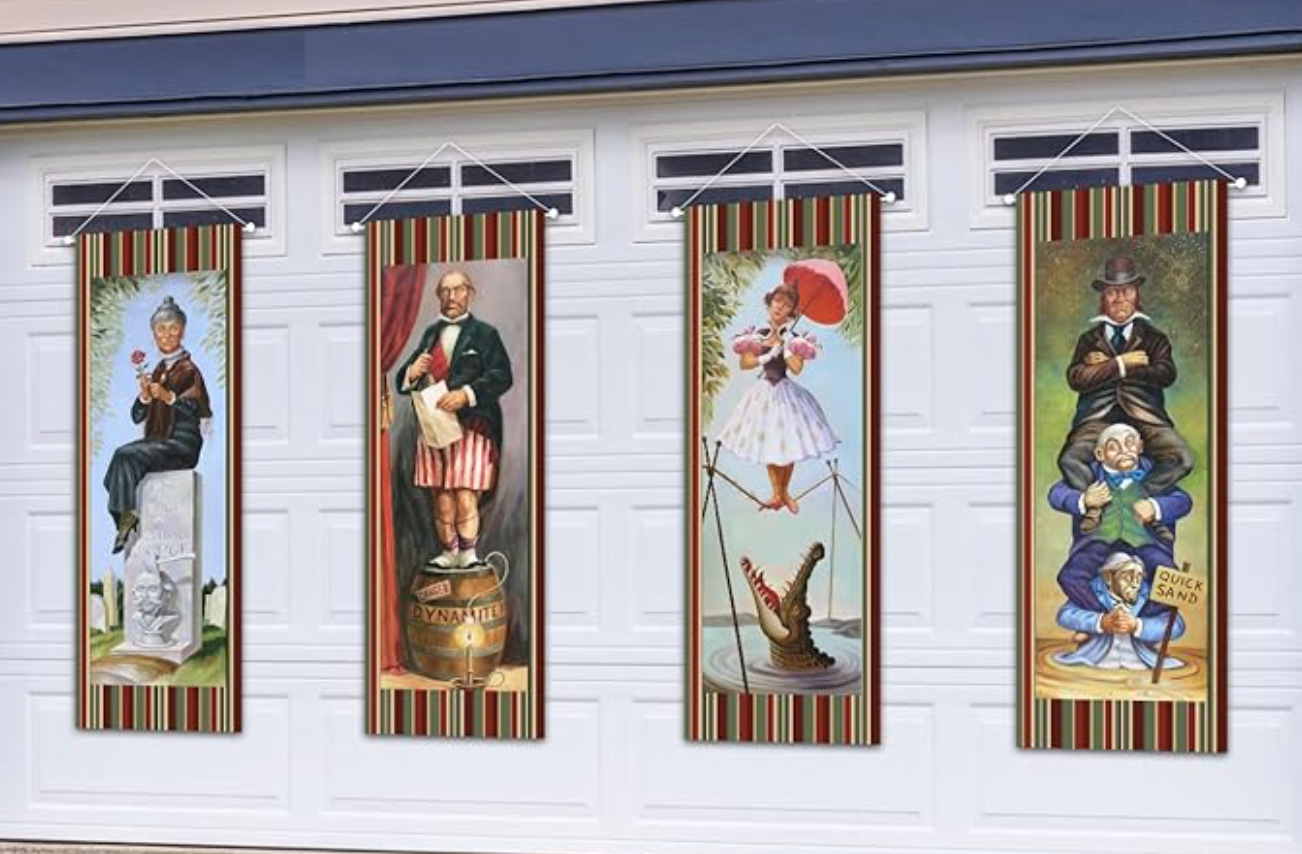
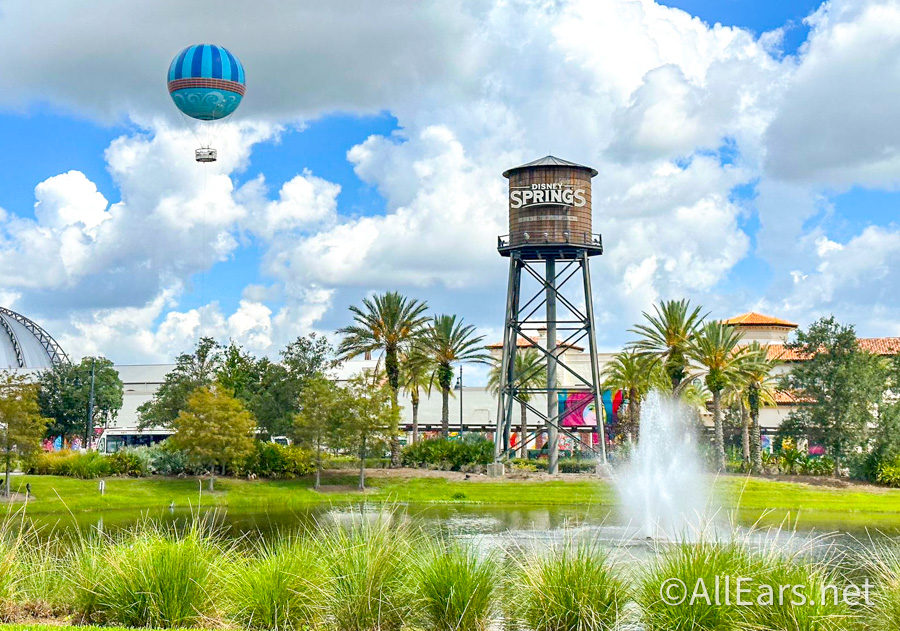
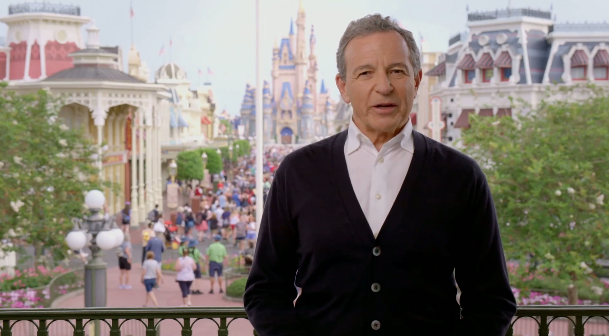
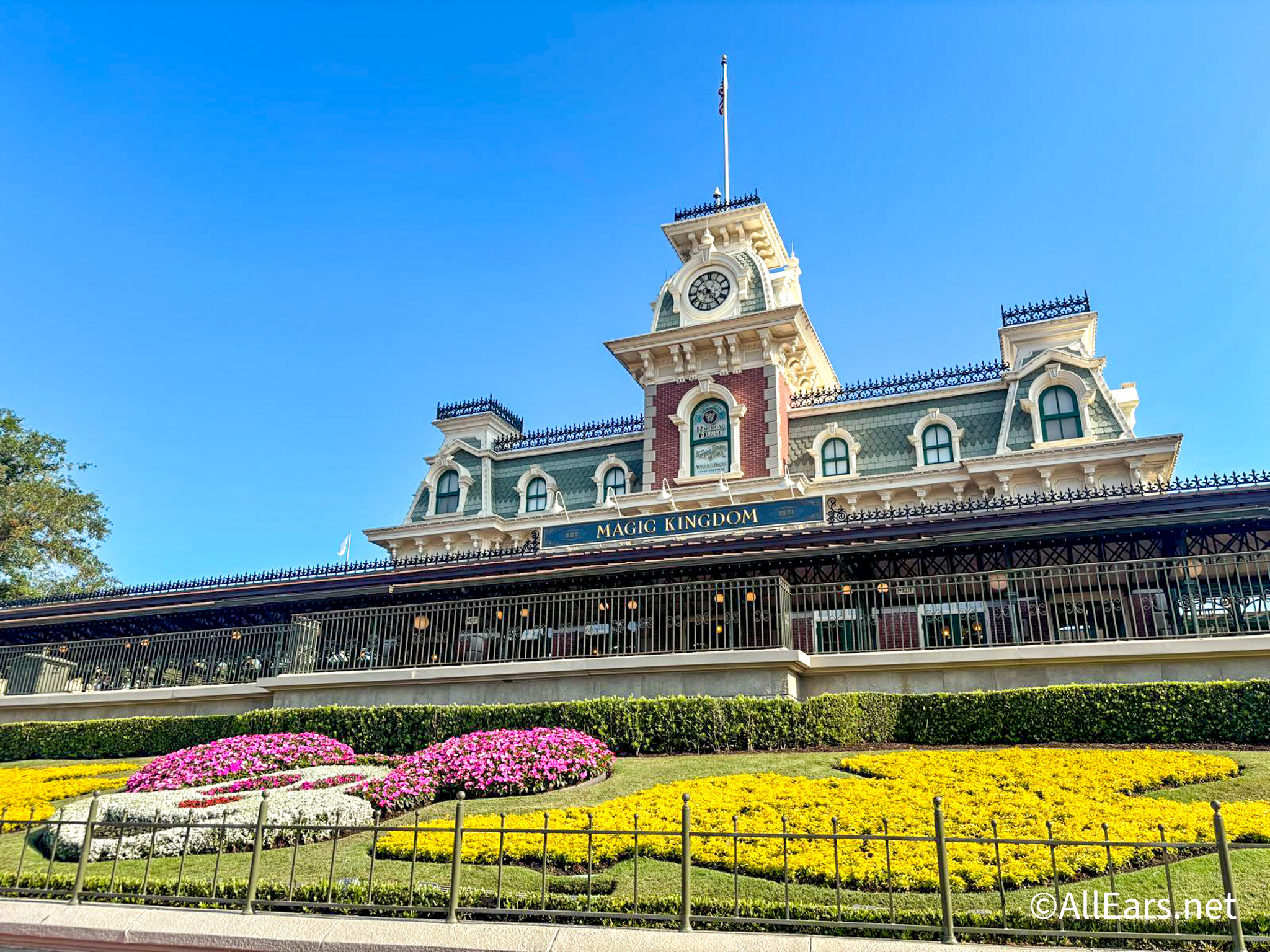
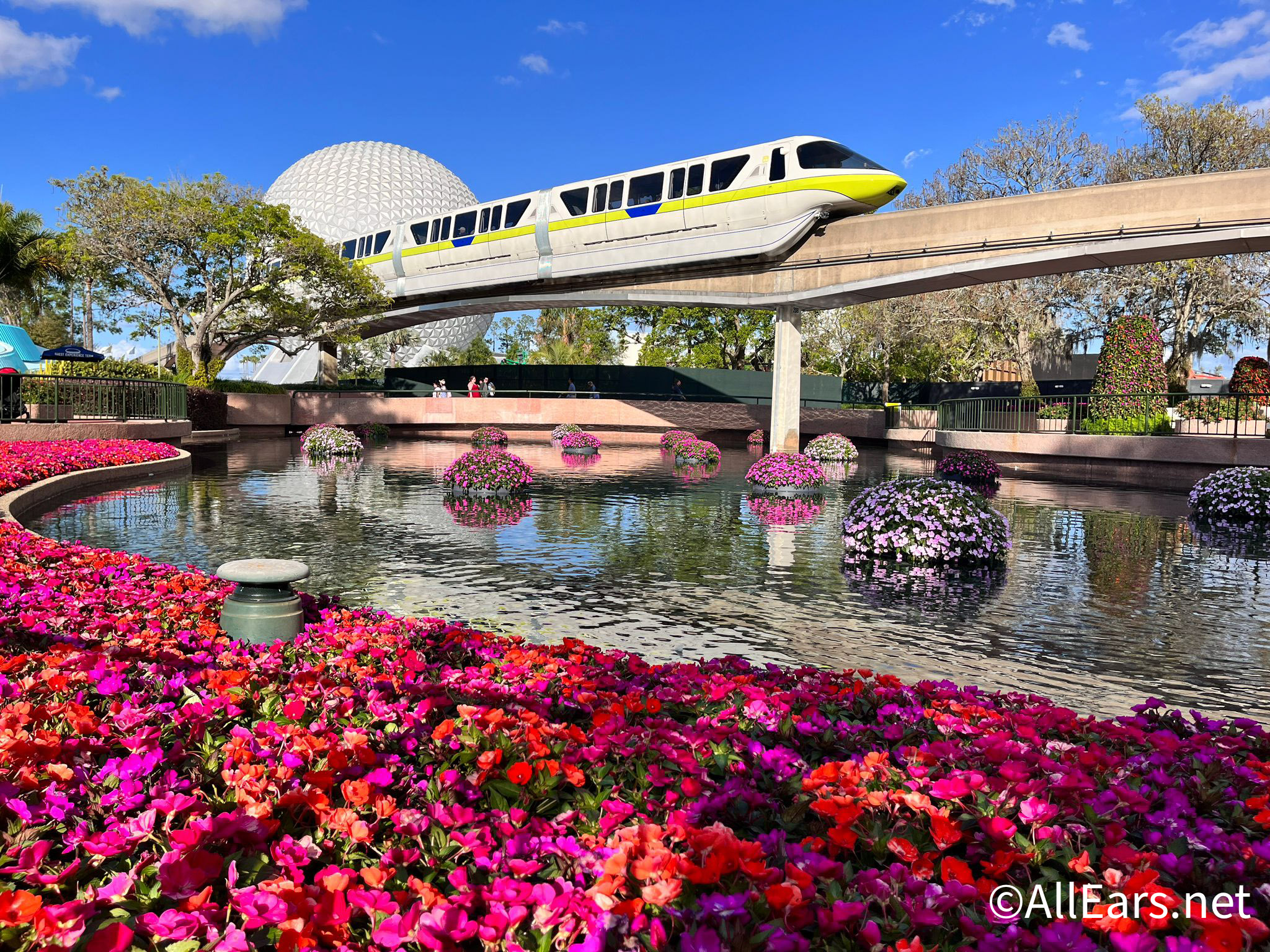
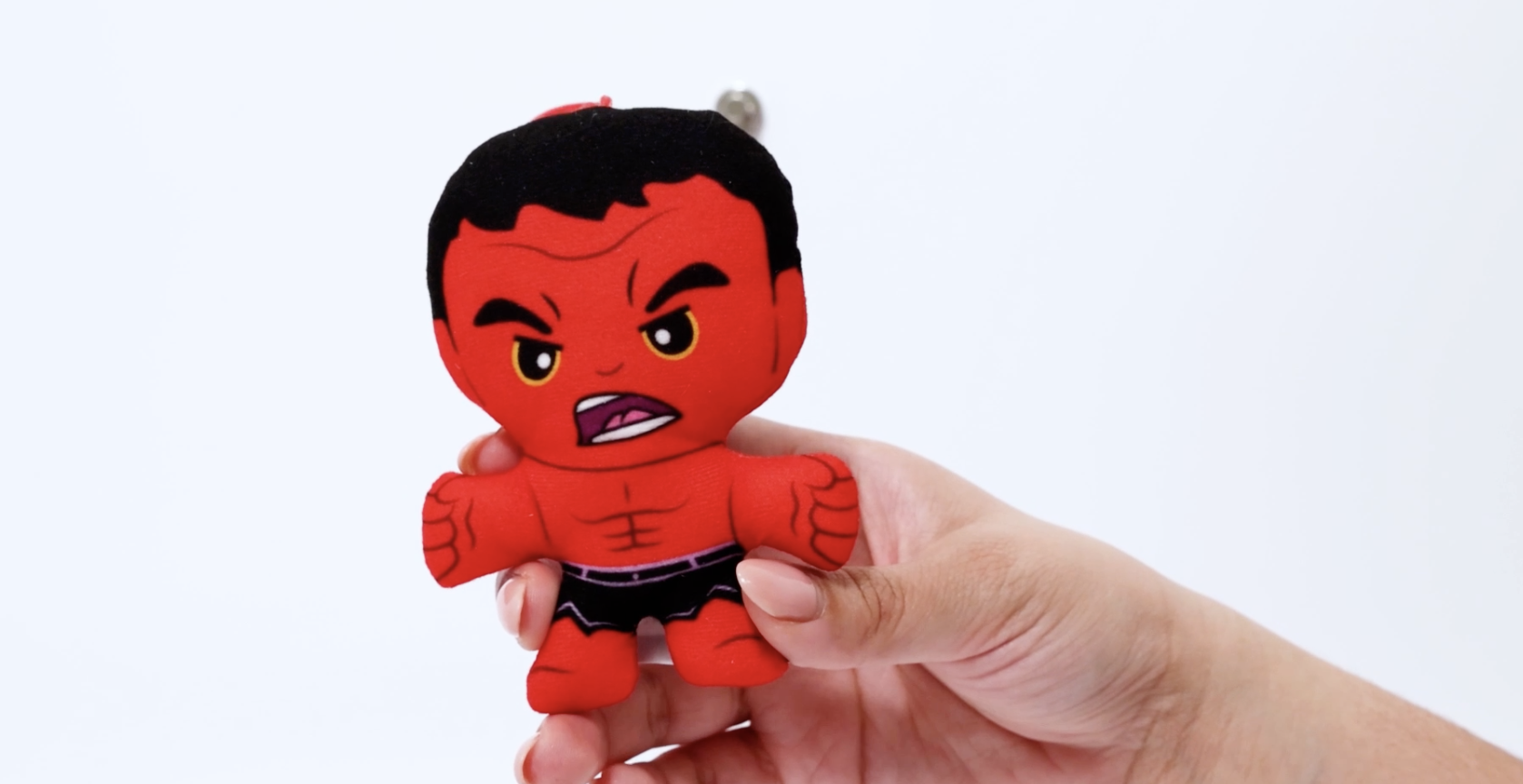

Trending Now
Canceled routes and more could complicate your next trip to the Orlando Airport. Here's what...
Let's talk about the new Disney Loungeflys that were just released on Amazon!
We need this tipping innovation to come to Disney World ASAP!
From fighting for a Virtual Queue spot to waiting six hours in line, things have...
Flying Southwest soon? Don't forget to follow these unspoken rules!
Disney just shared NEW details about the long-awaited return of Fantasmic!
Let's go over some of the best Cast Member tips from EPCOT just for you!
It's here -- Smellephants on Parade!
May 7th could give us insight into some big changes coming to The Walt Disney...
See the newest rides coming to Disney's huge park expansion -- Fantasy Springs!
Disney has had lots of hoops to jump through to get the DisneylandForward plans set...
Most people don't realize it, but not EVERYTHING has returned to Disney World quite yet.
We've gotta talk about these Disney World tourist traps that are actually worth it!
Heading to Disney World soon? Don't forget these hotel essentials!
See our FAVORITE Disney Halloween items available on Amazon NOW!
We got to check out a new tour in Disney World -- come along with...
Bob Iger has commented on the core values at Disney and how a Company can...
There are some great spots for introverts at the Magic Kingdom... if one knows where...
We stumbled upon this gorgeous and unique souvenir inside of EPCOT's World Showcase.
New Happy Meal toys are HERE!